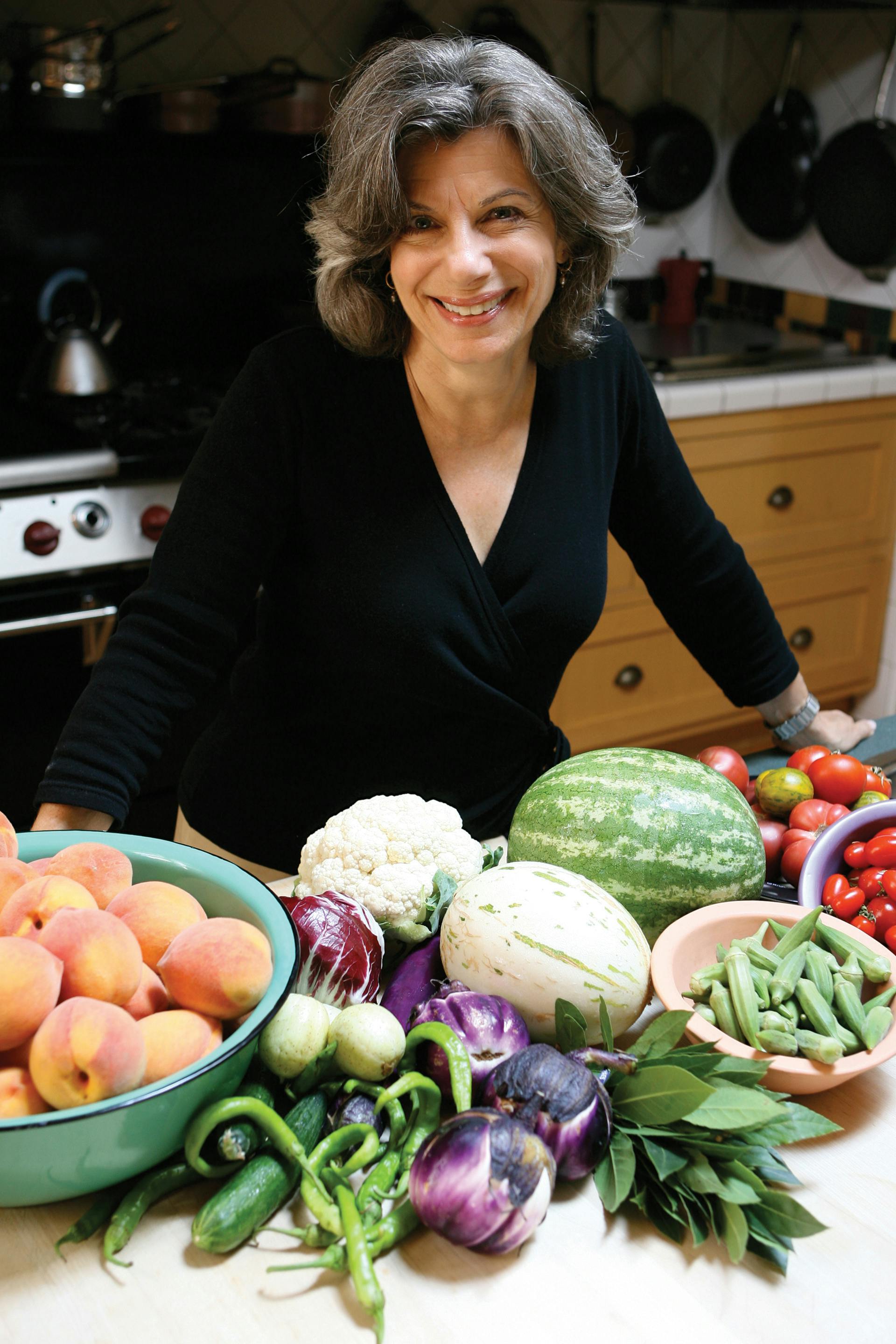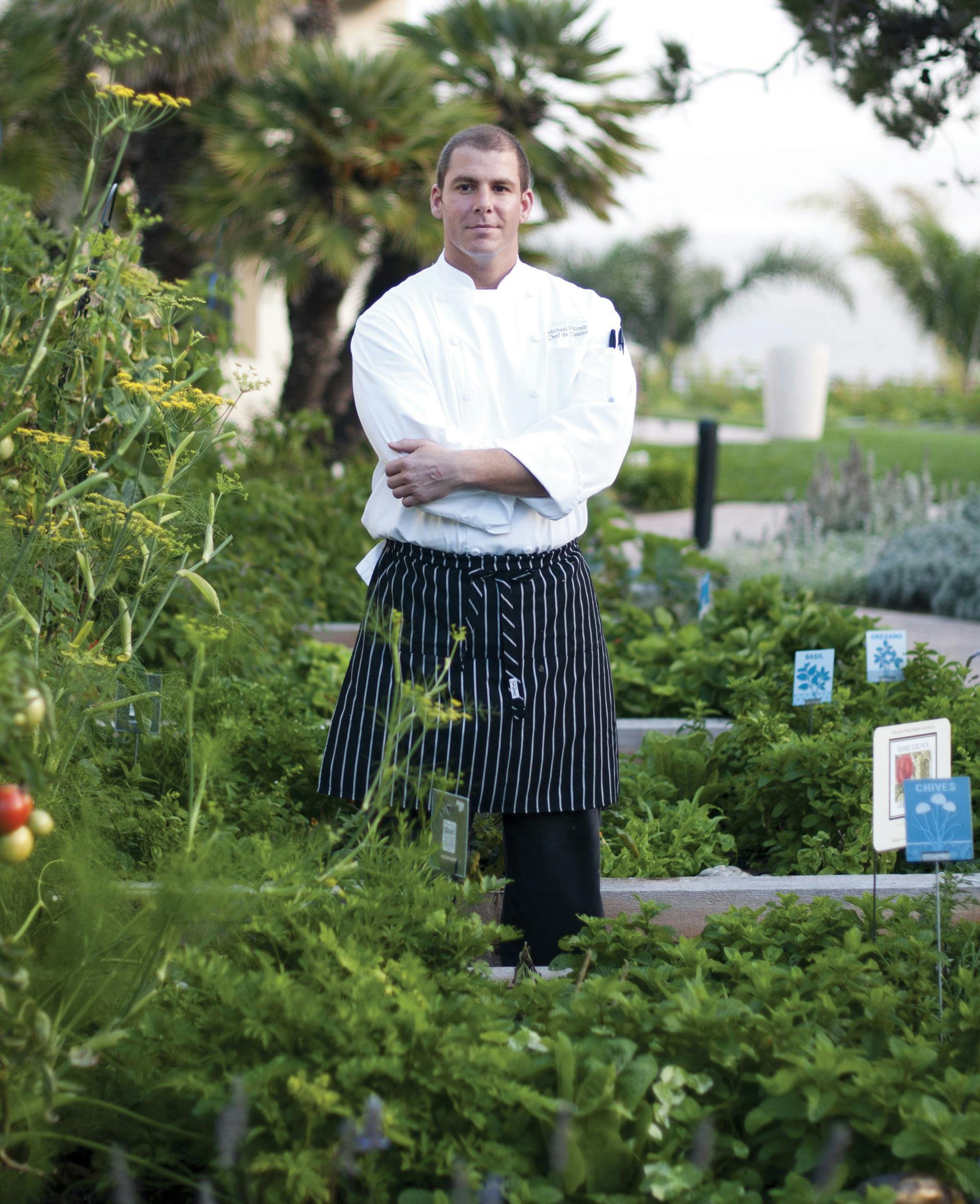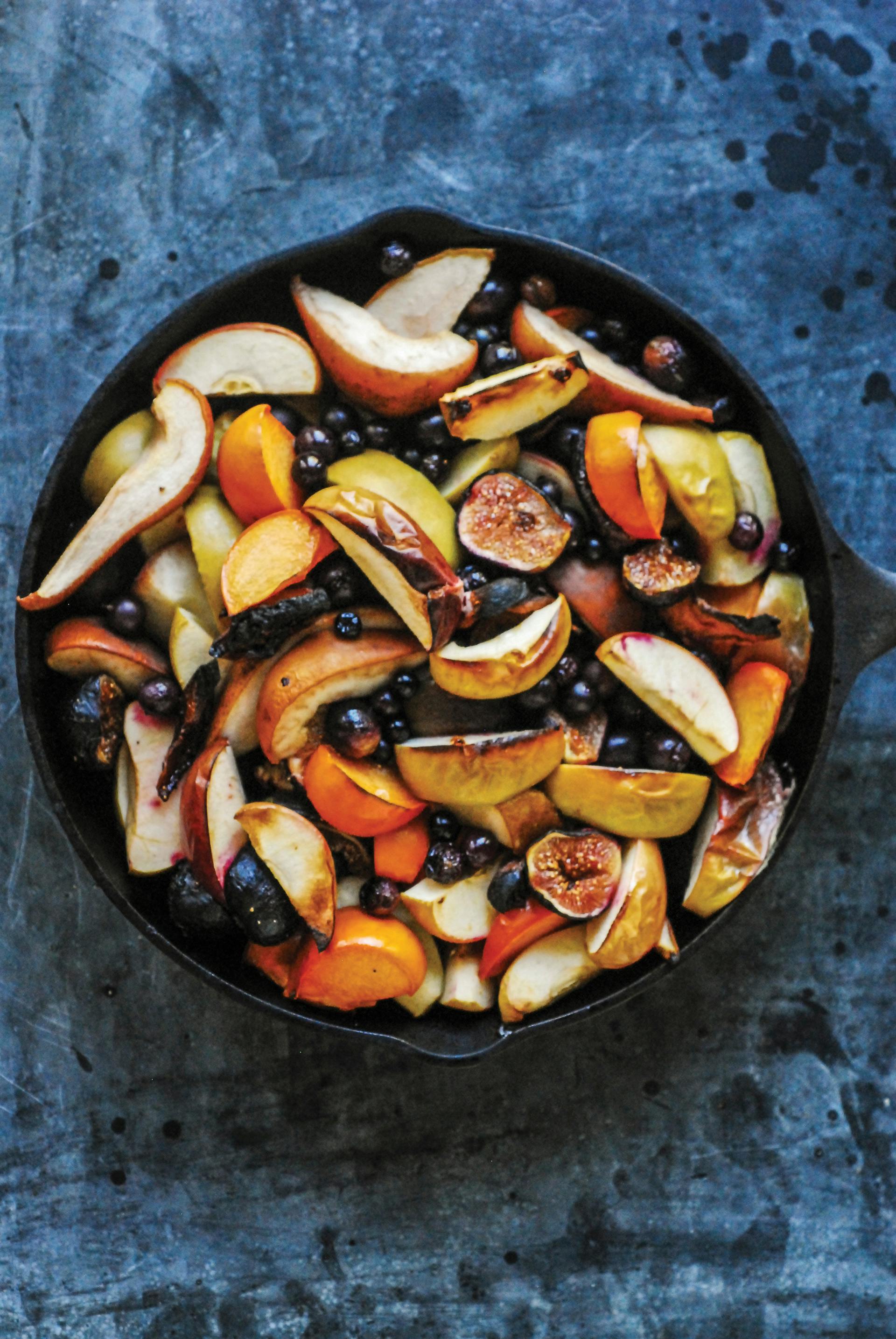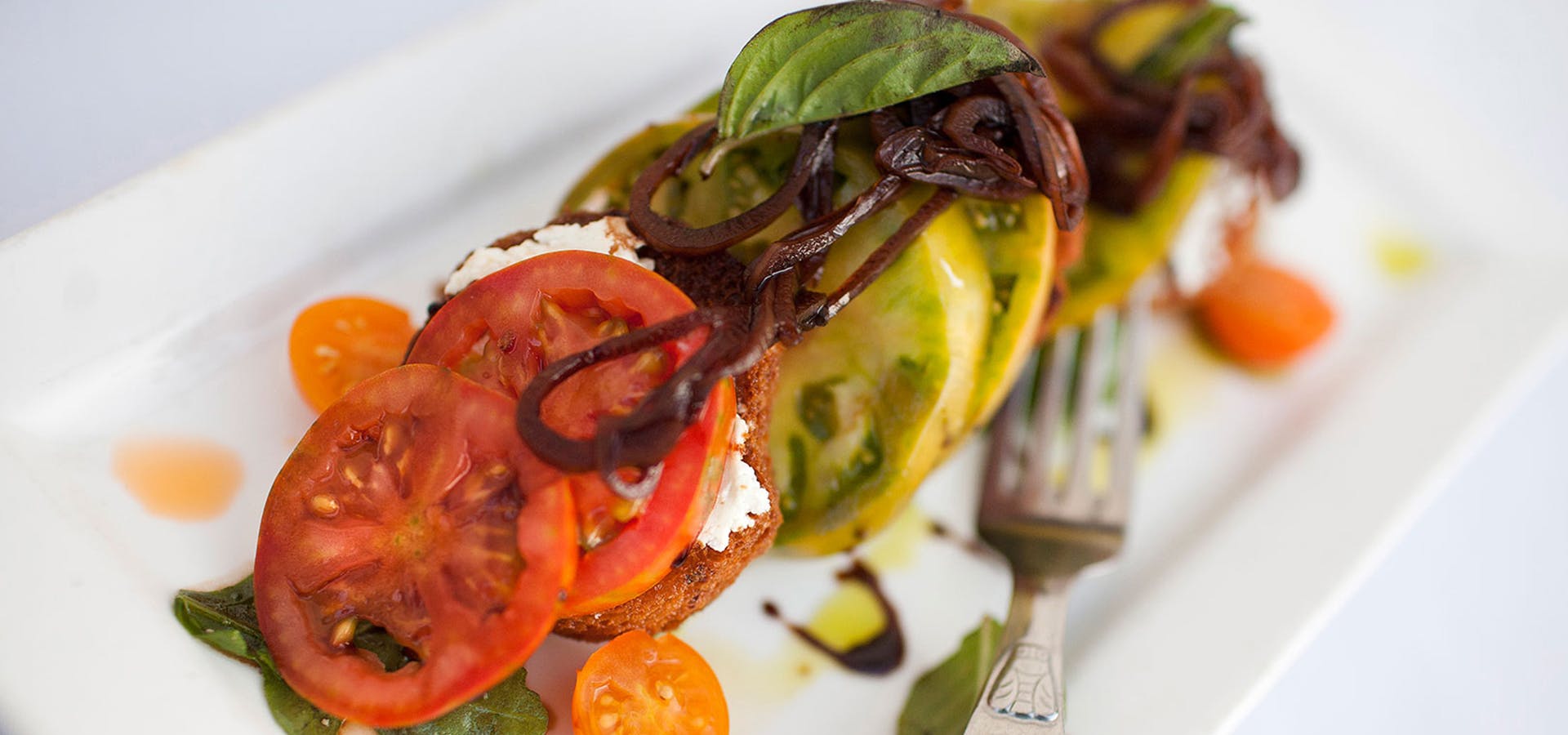
Here in Southern California, we’re blessed with an abundance of year-round, local produce. What do you most look forward to at the markets in September? How do you plan to use this item?
Amelia Saltsman: There are so many terrific ingredients that start showing up in early fall; it’s hard to choose just one! I’d have to go with ingredients that capture the spiced flavors of the season: persimmons, apples, pears and concord grapes.
Michael Fiorelli: I look forward to a couple of things. September is the perfect in-between season in California. If the temperature is just right, we’ll be enjoying the peak of heirloom tomatoes, the end of stone fruits and the start of grapes and figs. This for me presents the ultimate canning/jarring/preserving opportunity.
When you’re buying at the market, what do you look for in terms of quality produce? What should shoppers be alert to?
AS: The answer is the same whether you are a chef or a home cook: flavor. It takes great skill and passion to grow and harvest for flavor first, so it’s the most important and obvious clue to the quality of the produce and the quality of the farming itself. Sample where you can, and where you can’t—with raw potatoes, beets or squashes, for example—look for enticing visuals and aromas such as healthy, green leaves, glistening skins with no bruises, bright colors and the heady fragrance of healthy soil clinging to the vegetables.
Haggling at the market—is it okay, or do you find this awkward? I know when I have traveled in Asia and other places, vendors often think you’re a fool if you accept the first price they offer for an item. Is that the case here, or are prices more firm? Any bargaining tips?
MF: I never haggle. The profit margin on a lot of this produce is so low. The overhead that it takes to produce quality product is tremendous. Whatever money I spend on great produce from a farmer I know and trust is money well spent, as far as I’m concerned. It’s a win-win. I’m delivering a great product to my guests and supporting my local farmers and friends.

Fresh “Canned” Tomato Sauce
Courtesy of Chef Michael Fiorelli3 large Spanish onions, peeled and diced
2 heads whole garlic, peeled and sliced thin
1 cup extra virgin olive oil
2 teaspoons crushed red pepper flakes
2 teaspoons kosher salt
20 heirloom tomatoes (about baseball size)
¼ cup finely chopped basil
For the Sauce:
With a paring knife, remove the core of each tomato and cut a small X in the opposite end. Remove the tomato skins by lowering the tomatoes into a large pot of boiling water, simmering for 20 seconds and then immediately plunging them into ice water. When the tomatoes are cool enough to handle, you will notice the skins have started pulling away. Remove them completely using your hands or a paring knife and discard the skins. Dice the tomatoes and set aside.
In a heavy-bottom saucepan, add 3 tablespoons oil and heat over medium heat. When the oil is hot, add the garlic, onions and salt and begin to sweat, stirring constantly, until garlic and onions are soft and translucent, approximately 15 minutes. Add the tomatoes and bring to a simmer.
Turn heat to low so tomatoes are barely simmering and stir constantly while uncovered for 3 hours. Add chile flakes, basil and the rest of the olive oil and stir to incorporate. Turn off the heat.
To Can:
Sterilize canning jars and lids by washing and rinsing them thoroughly and then boiling them in water for a few minutes. Ladle tomato sauce into the canning jars, leaving about 1 inch at the top. Seal jars with their rubber-lined lids and place into a pot of water large enough to submerge them. Bring water to a boil and continue to boil for 30 minutes to sterilize. When the jars cool, you will hear the lid pop. If you do not hear a pop, place in the refrigerator and use within one week.

Roasted Autumn Fruits
Courtesy of Amelia SaltsmanFill a paella pan, cast-iron skillet or roasting pan with an abundance of seasonal fruits. Mix and match firm-flesh and melting-flesh fruits for interesting texture and use a mix of sweet and tart flavors to get a balance that makes you happy. Peel some or all of the fruits or none. You can roast the fruits in the oven or on the grill when the coals are low. You will be surprised by this dessert’s natural, autumn spiciness.
4 pounds apples and Bosc or Anjou pears (about 6 apples and 3 to 4 large pears), including some firm-flesh and some melting-flesh apple varieties such as Pippin and Golden Delicious
1 to 2 pint baskets of ripe figs, about ¾ pound
2 Fuyu persimmons
2 cups Concord, Autumn Royale or wine grapes
2 ounces dried fruit (plums, apricots or apples), snipped into small pieces
1/4 cup honey
1/3 cup Muscat dessert wine, such as
Beaumes de Venise
Thyme sprigs, optional
Crème frâiche, Greek yogurt, ice cream or heavy cream for serving, optional
Preheat oven to 400º. Peel fruit, if desired. Core and cut apples, pears and persimmons into large wedges or chunks. Cut figs in half. Place all fruit in a large, ovenproof pan and use your hands to mix them a bit. It’s okay if you need to mound fruit in your pan. Warm the honey and wine together and pour over the fruit. Toss in a few sprigs of thyme, if desired.
Roast until fruit is bubbling and well browned in places, about 45 minutes. Serve warm or at room temperature. Makes 10 to 12 servings.

Harvest produce tips from Amerlia Saltsman and Michael Fiorelli.
It’s difficult to catch the subtle changes of season in a place like Southern California, where local farmers markets offer a colorful array of amazing bounty month after month after month. So we asked local foodie experts to share some ideas and recipes that celebrate September in the Southland. It’s a transitional month where the very last apricots, plums and peaches nestle next to dazzling mounds of heirloom tomatoes, typically at their peak at this time. From bestselling cookbook author and Santa Monica market guru Amelia Saltsman to the South Bay’s current superstar chef Michael Fiorelli, enjoy these insider tips and recipes designed to help you make the most of the season.
 Here in Southern California, we’re blessed with an abundance of year-round, local produce. What do you most look forward to at the markets in September? How do you plan to use this item?
Here in Southern California, we’re blessed with an abundance of year-round, local produce. What do you most look forward to at the markets in September? How do you plan to use this item?
Amelia Saltsman: There are so many terrific ingredients that start showing up in early fall; it’s hard to choose just one! I’d have to go with ingredients that capture the spiced flavors of the season: persimmons, apples, pears and concord grapes.
Michael Fiorelli: I look forward to a couple of things. September is the perfect in-between season in California. If the temperature is just right, we’ll be enjoying the peak of heirloom tomatoes, the end of stone fruits and the start of grapes and figs. This for me presents the ultimate canning/jarring/preserving opportunity.
When you’re buying at the market, what do you look for in terms of quality produce? What should shoppers be alert to?
AS: The answer is the same whether you are a chef or a home cook: flavor. It takes great skill and passion to grow and harvest for flavor first, so it’s the most important and obvious clue to the quality of the produce and the quality of the farming itself. Sample where you can, and where you can’t—with raw potatoes, beets or squashes, for example—look for enticing visuals and aromas such as healthy, green leaves, glistening skins with no bruises, bright colors and the heady fragrance of healthy soil clinging to the vegetables.
Haggling at the market—is it okay, or do you find this awkward? I know when I have traveled in Asia and other places, vendors often think you’re a fool if you accept the first price they offer for an item. Is that the case here, or are prices more firm? Any bargaining tips?
MF: I never haggle. The profit margin on a lot of this produce is so low. The overhead that it takes to produce quality product is tremendous. Whatever money I spend on great produce from a farmer I know and trust is money well spent, as far as I’m concerned. It’s a win-win. I’m delivering a great product to my guests and supporting my local farmers and friends.
Fresh “Canned” Tomato Sauce
Courtesy of Chef Michael Fiorelli3 large Spanish onions, peeled and diced
2 heads whole garlic, peeled and sliced thin
1 cup extra virgin olive oil
2 teaspoons crushed red pepper flakes
2 teaspoons kosher salt
20 heirloom tomatoes (about baseball size)
¼ cup finely chopped basil
For the Sauce:
With a paring knife, remove the core of each tomato and cut a small X in the opposite end. Remove the tomato skins by lowering the tomatoes into a large pot of boiling water, simmering for 20 seconds and then immediately plunging them into ice water. When the tomatoes are cool enough to handle, you will notice the skins have started pulling away. Remove them completely using your hands or a paring knife and discard the skins. Dice the tomatoes and set aside.
In a heavy-bottom saucepan, add 3 tablespoons oil and heat over medium heat. When the oil is hot, add the garlic, onions and salt and begin to sweat, stirring constantly, until garlic and onions are soft and translucent, approximately 15 minutes. Add the tomatoes and bring to a simmer.
Turn heat to low so tomatoes are barely simmering and stir constantly while uncovered for 3 hours. Add chile flakes, basil and the rest of the olive oil and stir to incorporate. Turn off the heat.
To Can:
Sterilize canning jars and lids by washing and rinsing them thoroughly and then boiling them in water for a few minutes. Ladle tomato sauce into the canning jars, leaving about 1 inch at the top. Seal jars with their rubber-lined lids and place into a pot of water large enough to submerge them. Bring water to a boil and continue to boil for 30 minutes to sterilize. When the jars cool, you will hear the lid pop. If you do not hear a pop, place in the refrigerator and use within one week.
Roasted Autumn Fruits
Courtesy of Amelia SaltsmanFill a paella pan, cast-iron skillet or roasting pan with an abundance of seasonal fruits. Mix and match firm-flesh and melting-flesh fruits for interesting texture and use a mix of sweet and tart flavors to get a balance that makes you happy. Peel some or all of the fruits or none. You can roast the fruits in the oven or on the grill when the coals are low. You will be surprised by this dessert’s natural, autumn spiciness.
4 pounds apples and Bosc or Anjou pears (about 6 apples and 3 to 4 large pears), including some firm-flesh and some melting-flesh apple varieties such as Pippin and Golden Delicious
1 to 2 pint baskets of ripe figs, about ¾ pound
2 Fuyu persimmons
2 cups Concord, Autumn Royale or wine grapes
2 ounces dried fruit (plums, apricots or apples), snipped into small pieces
1/4 cup honey
1/3 cup Muscat dessert wine, such as
Beaumes de Venise
Thyme sprigs, optional
Crème frâiche, Greek yogurt, ice cream or heavy cream for serving, optional
Preheat oven to 400º. Peel fruit, if desired. Core and cut apples, pears and persimmons into large wedges or chunks. Cut figs in half. Place all fruit in a large, ovenproof pan and use your hands to mix them a bit. It’s okay if you need to mound fruit in your pan. Warm the honey and wine together and pour over the fruit. Toss in a few sprigs of thyme, if desired.
Roast until fruit is bubbling and well browned in places, about 45 minutes. Serve warm or at room temperature. Makes 10 to 12 servings.
Harvest produce tips from Amerlia Saltsman and Michael Fiorelli.
[tribulant_slideshow gallery_id=”33″]










